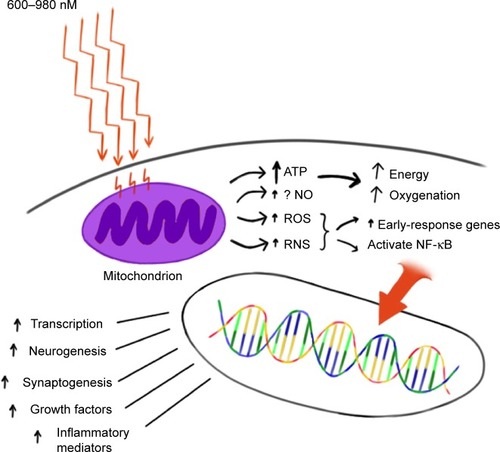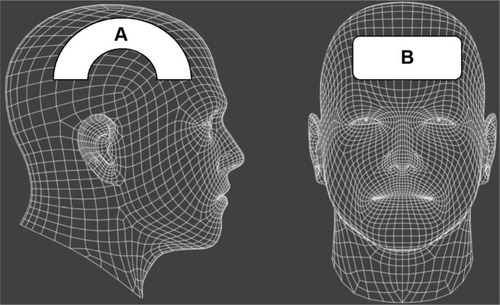Figures & data
Figure 1 Hypothesized mechanism of action of NIR light therapy.
Abbreviations: NIR, near-infrared; ATP, adenosine triphosphate; ROS, reactive oxygen species; RNS, reactive nitrogen species; NO, nitric oxide; NF-κB, nuclear factor kappa B.

Figure 2 Treatment parameters per individual, based on area of the skull treated.

Table 1 Infrared light treatment parameters for each of the ten patients in the case series
Table 2 NILT case series with demographics, symptoms, and treatment response
